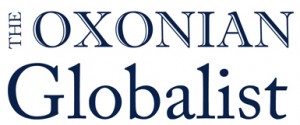Remembrance: The Other Problem From Hell
A traditional medium for dispute resolution, gacaca courts have become one of the principal means of prosecuting the 40,000 prisoners accused of taking part in the massacre of Tutsis over the course of one hundred days in 1994. Instead of being moderated by judges, these courts are presided over by elected community members with basic judicial training. Today, there exist at least 12,000 gacaca courts, employing 250,000 judges, or Inyangamugayo.
A deep-seated yearning for closure is one of the central motivating factors behind the gacaca initiative. Unable to determine how, where or by whom their loved ones where killed, many Rwandans find it difficult to move on. Meeting about once a week, these courts are intended to act as forums for reconciliation rather than revenge. According to the Rwandan government, gacaca courts fulfil three functions: “The collection of information relating to the genocide, the categorization of persons prosecuted for having committed genocide or having played a role in different genocidal crimes, and the trial of cases falling under their competence.”
To facilitate this process, gacaca courts abide by a very specific set of procedures. Firstly, those convicted by the gacaca courts are convicted of crimes against humanity. Proceedings take place in public and the defendant can choose either to confess his crimes or contend that he is innocent. Moreover, community members who knew the defendants’ victims or survived his aggressions can choose to confront him in court. Others can also provide evidence in favour of the defendant if they feel that the charges are false or exaggerated. Although gacaca courts cannot sentence someone to death, they have the power to condemn defendants to a life sentence.
Many aid organisations have praised the gacaca system’s ability to speed up court cases and reduce prison congestion. Thanks to the gacaca system, the Rwandan government has now released over 1,400 prisoners, requiring them to do community service in lieu of jail time. Perhaps the most important component of the local gacacas is public participation in adjudication efforts. By encouraging frank public dialogue about the genocide between neighbours, the system promotes the standardisation of moral codes and principles of justice and punishment at a grassroots level.
Yet the success of gacaca courts in achieving both their practical and political aims remains controversial. Many human rights groups, like Human Rights Watch, are concerned about the absence of lawyers in gacaca courts. After all, according to The Guardian’s Jeevan Vasagar, 20% of those tried in gacaca courts have been acquitted, implying that many cases are based on groundless accusations. The risk of an unfair trial is only accentuated by the unreliability of memory in conjunction with the lack of legal representation.
Worse, those who partake in the gacaca system either as witnesses or in an official capacity can become targets of violence. According to a report by a Rwandan human rights organisation, at least 40 gacaca witnesses were victims of murder or attempted murder in the second half of 2006, demonstrating a severe rise in reprisals over the years; there is also evidence that many of these attacks go unreported. In some cases, entire communities have refused to testify for fear of putting themselves and their loved ones in danger. Overall, public participation in the gacaca system has been on the decline, due to various factors including the growing perception that gacaca judges are corrupt and the fact that many gacaca judges were implicated in the genocide themselves.
Most crucially, gacaca courts have failed to provide reconciliation for the people of Rwanda. Many Hutus have begun to question the effectiveness of gacaca courts due to the Rwandan government’s unwillingness to investigate crimes committed by the RPA against Hutu civilians; contrary to a nuanced re-evaluation of a traumatic event, this suggests a projection of collective guilt onto the Hutu population. Thus the gacaca system has facilitated the creation of two absolute archetypes, that of the victim and the criminal. In one document released by the National Service of Gacaca Jurisdictions justifying the use of gacaca courts, the Rwandan government posits their purpose as providing an avenue through which Rwandans can “work together in order to judge those who participated in the genocide, identify the victims and rehabilitate the innocent”. At first glance, this may seem benign. But when analysed in conjunction with the obfuscation of RPA war crimes, such a statement may appear to Hutus as an empty promise, or, at worst, a euphemism for the ascription of collective blame.
We must ask ourselves a difficult question: is it responsible to encourage the institution of collective memory? From the streets of Jerusalem to the schoolyards of Belfast, from the icy forests of Bosnia to the humid hills of Rwanda, the past has become the most dangerous of weapons. Of course, the past never leaves us. It is the foundation of the present and the cast of our future. Nevertheless, assertions of collective memory are fundamentally baseless. People remember events as individuals, through the hazy lens of their own steadily decaying memories. Therefore, any analysis of history, legal or otherwise, requires a thorough and balanced investigation, endowed with significant checks on the subjective thirst for vengeance.
Still, it is not clear whether there is an alternative to the gacaca system. For this reason, the Rwandan government should concede the importance of mourning and local participation in the adjudication process without endorsing a particular narrative of remembrance; they could begin, for instance, by allowing gacaca courts to investigate RPA war crimes. Though noble in theory, the sanctification of a particular historical narrative may only result in the attribution of guilt to one portion of society, culminating in the perpetuation of social division and conflict.








